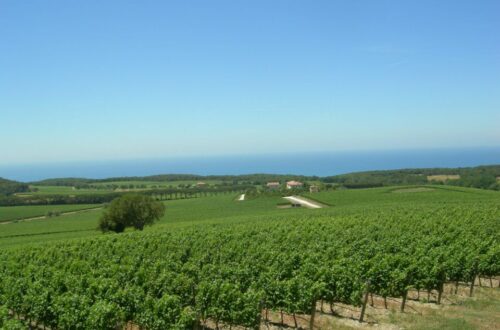Table of Contents
What is Piemonte DOC?
Piemonte DOC is one of Italy’s most flexible wine appellations, embracing the entire Piedmont region and offering a mosaic of styles—from crisp whites to structured reds, lively sparkling wines, and indulgent dessert bottlings. Introduced in 1994, this denomination gives producers freedom to work with local and international grapes while maintaining the region’s unmistakable identity.
Whether you’re sipping a floral Moscato, a bold Nebbiolo, or a playful frizzante, Piemonte DOC provides an accessible entry point into one of Italy’s most prestigious wine regions.
History & Origins
Although the Piemonte DOC classification is relatively recent, Piedmont’s winemaking heritage stretches back over two millennia to Celtic tribes and Roman settlements. The DOC was created to unify and protect wines that didn’t fit within stricter subregional DOC/DOCG boundaries but still reflected Piedmont’s quality traditions.
The move allowed for experimentation with blends, international grapes, and innovative styles—bridging the gap between historic appellations like Barolo DOCG and the modern tastes of a global market.
Where It’s Made: Geography & Terroir
The Piemonte DOC covers all of Piedmont’s vineyard areas—an undulating landscape where the Alps frame the horizon, hills roll into valleys, and the Po River threads through fertile plains. Key subzones include:
- Langhe – Known for Nebbiolo, Barbera, Dolcetto, and elegant whites.
- Monferrato – Famed for Barbera and aromatic varietals like Brachetto.
- Roero – Lighter Nebbiolos, Arneis whites, and sandy soils.
Piedmont’s continental climate—cold winters, warm summers, and foggy autumns—helps grapes ripen slowly, preserving acidity while developing complex aromatics.
Grape Varieties in Piemonte DOC Wines
Unlike Piedmont’s tightly defined DOCGs, the Piemonte DOC allows both indigenous and international grapes:
- Red Grapes: Barbera, Dolcetto, Nebbiolo, Freisa, Bonarda, Pinot Nero, Cabernet Sauvignon, Merlot.
- White Grapes: Cortese, Arneis, Moscato Bianco, Chardonnay, Sauvignon Blanc, Favorita.
- Specialty & Dessert Styles: Moscato d’Asti, Brachetto, late-harvest Arneis, passito wines.
This flexibility makes Piemonte DOC ideal for producers seeking creativity—and for drinkers seeking variety.
Piemonte DOC vs Piedmont DOCG: What’s the Difference?
- DOCG wines (like Barolo or Barbaresco) follow stricter vineyard, yield, and aging rules and are tied to specific subregions.
- Piemonte DOC covers the whole region and allows greater stylistic freedom, making it a playground for both tradition and innovation.
- Price-wise, Piemonte DOC wines generally offer better value for everyday drinking.
Winemaking & DOC Regulations
The DOC covers a broad range of wine types, but regulations ensure:
- Minimum alcohol levels (vary by style)
- Yield limits to protect quality
- Approved grape varieties for each style
- Mandatory sensory and lab analysis before bottling
Key Facts at a Glance
| Feature | Detail |
| Established | 1994 |
| Region | Entire Piedmont |
| Styles | Red, White, Rosé, Sparkling, Dessert |
| Grapes | Native & International |
| Climate | Continental |
| Best Vintages (recent) | 2016, 2019, 2021, 2022 |
| Price Range | €7–€25 (most styles) |
Tasting Notes
Reds
- Barbera-based: Juicy red cherry, blackberry, and violet with bright acidity.
- Nebbiolo-based: Roses, tar, redcurrant, with structured tannins.
Try: Vietti “Tre Vigne” Barbera Piemonte DOC 2021 – €14 – vibrant, food-friendly.
Whites
- Arneis & Cortese: Crisp pear, almond, white flowers.
- Chardonnay blends: Stone fruit, vanilla hints, rounded texture.
Try: Prunotto Arneis Piemonte DOC 2022 – €12 – refreshing and aromatic.
Sparkling
- Moscato: Sweet, low-alcohol, peach and orange blossom.
- Metodo Classico: Brioche, apple, fine mousse.
Try: Gancia Asti Metodo Classico Piemonte DOC – €18 – refined sparkling style.
Best Piemonte DOC Wines to Try in 2025
- Vietti “Tre Vigne” Barbera 2021 – Classic Piedmont freshness.
- Prunotto Arneis 2022 – Zesty and floral.
- Gancia Metodo Classico – Elegant bubbles.
- Paolo Scavino Dolcetto 2021 – Plush fruit, easy-drinking.
- Marchesi di Barolo Chardonnay 2020 – Rich yet balanced.
How to Choose Quality Piemonte DOC Wines
- Look for recent vintages for freshness (2021–2023).
- Check for producers also making DOCG wines—they often bring the same care to their DOC bottlings.
- For reds, Barbera and Nebbiolo blends offer the best complexity-to-price ratio.
Serving & Pairing
- Reds: 16–18°C, decant youthful Nebbiolos. Pair with tajarin pasta, vitello tonnato, or mushroom risotto.
- Whites: 8–10°C, perfect with fish crudo, goat cheese, or hazelnut salads.
- Sparkling/Dessert: 6–8°C, ideal with pastries or fresh fruit tarts.
Visiting Piemonte Wine Region
- Best Time: September–October (harvest, truffle season).
- Tours: Langhe & Monferrato wine routes, Roero tasting rooms.
- Festivals: Alba White Truffle Fair, Douja d’Or Wine Festival.
- Must-Visit Wineries: Vietti, Prunotto, Gancia.
Where to Buy & Pricing
- In Italy: Wine shops in Alba, Asti, Turin.
- Online Retailers: Tannico.it, Wine.com, Vivino.
- Price Range: €7–€25, with premium sparkling up to €35.
FAQ on Piemonte DOC
What does Piemonte DOC taste like?
It depends on the style—reds are fruity and structured, whites crisp and floral, sparklings aromatic and fresh.
Is Piemonte DOC good wine?
Yes—many offer exceptional value compared to DOCG wines.
How long does Piemonte DOC wine last?
Most are best enjoyed within 3–5 years, though quality reds may age a decade.
What’s the difference between DOC and DOCG?
DOCG is more tightly regulated and tied to smaller zones; DOC is broader and more flexible.
Where can I buy Piemonte DOC online?
Retailers like Tannico, Wine.com, and Vivino carry a wide range.
Fun Facts & Cultural Notes
- Piedmont is home to over 40 DOC/DOCG appellations, but Piemonte DOC is the only one covering the whole region.
- The appellation allows both traditional cork and screwcap closures—rare in Italy.
- Local cuisine (hazelnuts, truffles, tajarin pasta) pairs beautifully with Piemonte DOC wines.
CTA for Audience Engagement
Have you explored Piemonte DOC wines? Share your favorite bottle with our Drink Italian community on Instagram using #DrinkItalian and tag us for a chance to be featured in our monthly wine picks.


